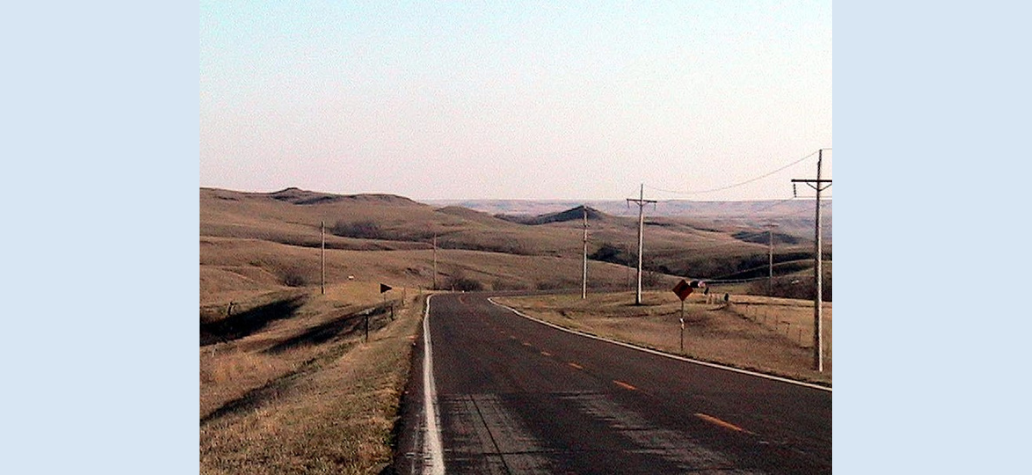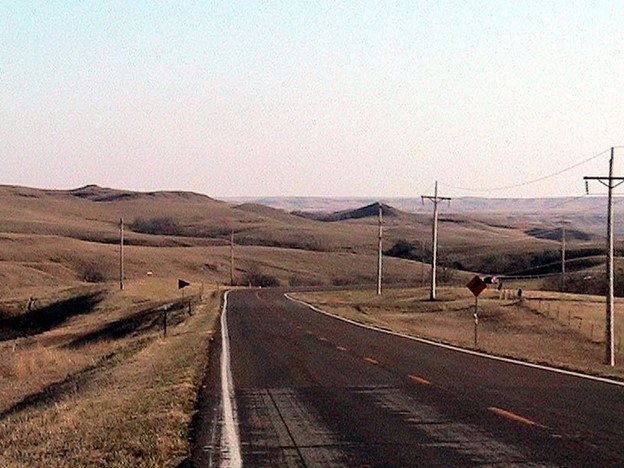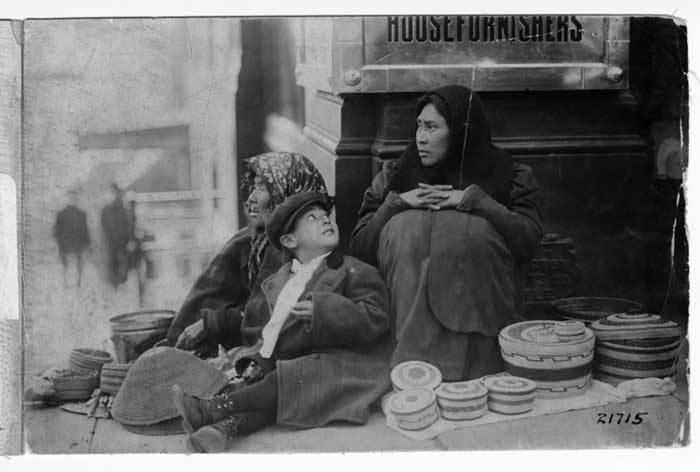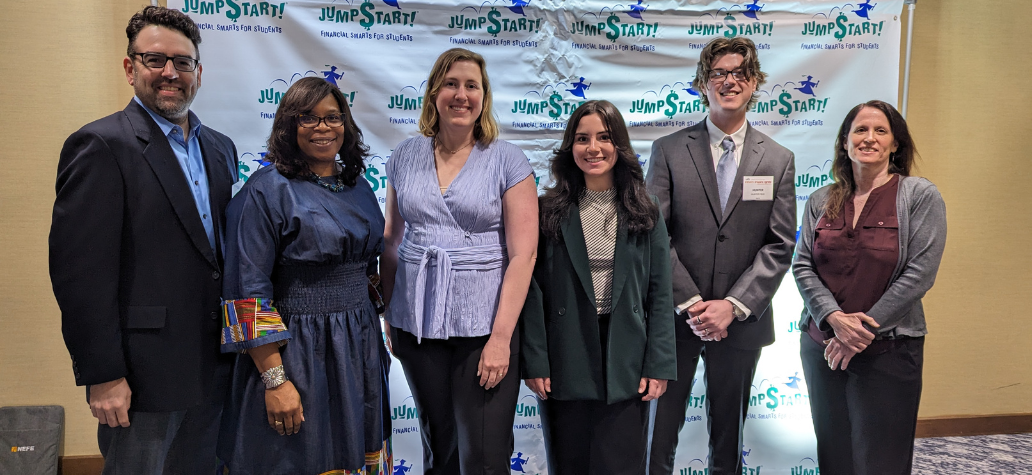Abstract- Father Sky
My previous three articles have addressed historical events - “The Origin Story” - and practices - “Boarding School and Western Education-Related Trauma”, “Rations and Commodities: Mass Genocide through Generational Limited and Processed Food Access” - that have influenced present-day Native American experiences in relation to financial education, laying the foundation for this fourth article topic of financial trauma for Native Americans and the United States financial systems that perpetuate it. This article discusses physiological responses related to oppressive, systemic financial systems and living in persistent poverty, specific to much of the Native American population’s experiences in the United States.
Prayer, Song, and Introduction- East/Sweetgrass/Beginning
Miigwech Thank You Prayer | Anishinaabe/English
Gizhe Manidoo
Creator
I’iw nama’ewinan, maaba asemaa, miinwaa n’ode’winaanin gda-bagidinimaagom.
We offer our prayers, tobacco and our hearts.
Miigwech gda-igom n’mishomissinaanig miinwa n’ookomisinaanig jiinaago gaa-iyaajig, noongom e-iyaajig miinwaa waabang ge-iyaajig.
Thank you for the Grandfathers and Grandmothers of yesterday, today and tomorrow.
Miigwech manidoog iyaajig noodinong, iyaajig nibiing, iyaajig shkodeng miinwa iyaajig akiing.
Thank you spirits of the winds, water, fire and earth.
Miigwech manidoog iyaajig giiwedinong, waabanong, zhaawanong miinwa epangishimok.
Thank you spirits of the north, east, south and west.
Daga bi-wiidokawishinaang wii mino bimaadiziyaang.
Please help us to live a good life.”
Shkaakaamikwe Mother Earth
Shkaakaamikwe, Maazikaamikwe, Shkaakaamikwe
Mother Earth, Mother Earth, Mother Earth
Gidaanisag bimosewag
Your daughters, they walk
Giiwedinong
from the North
Waabanong
from the East
Zhaawanong
from the South
Epangishimong
from the place where it falls, West
Hey ya hey yo
Gitchi-manadoo,
Creator,
Thank you for the many teachings this life has to offer and for the strength and resilience to persevere in the face of adversity. Please bless the path we must travel to ensure that seven generations from now, our grandchildren survive and thrive, living happy and healthy lives. Bless our fellow community members with the guidance, knowledge, and tools to protect and preserve all beings that inhabit Mother Earth and Father Sky in a safe and healthy way. May we treat each other with reciprocal love and kindness. May we, as humans, exhibit compassion as we navigate the healing process from present and historical moments that are held as wisdom in the body.
Chii Miigwetch,
Many Thanks (Anishinaabemowin/English).
This is one piece of a seven-part series unpacking the complexities surrounding financial education, including financial well-being, for Native American communities, utilizing interviews from prominent Native American individuals across the financial education sector and accessible literature. Together, these seven pieces create a snapshot of this landscape.
The National Endowment for Financial Education’s Personal Finance Ecosystem was developed to “demonstrate financial education’s role in an individual’s well-being and within the broader environment." At the core of this ecosystem is financial well-being defined as “a personal state that typically includes factors such as satisfactorily managing one’s current financial situation; the ability to exercise choice and feel in control of finances; and the outlook for future prospects.” One of the core concepts of the ecosystem are Foundational Factors, including general skills and competencies, values and beliefs, family and culture, and social economics and geography. The latter subsection includes socioeconomics and systemic inequalities, which we will focus on for this article and how it influences greater physiological responses that can further perpetuate financial burdens, as well as trauma-response behaviors that enforce negative financial actions and patterns.
History- South/Cedar/Growth
According to Joyce Marter, licensed clinical professional counselor (LCPC) with Choosing Therapy, “financial trauma refers to the emotional, cognitive, relational, and physical symptoms triggered by significate financial stressors. These stressors can include poverty, homelessness, food insecurity, and unemployment, which can have a lasting impact on one’s mental, physical, and financial health.” The next few paragraphs will feature data on these stressors for Native American communities.
While statistics for Native American communities are difficult to come by, the data we do have shows communities in greater financial distress compared to the general U.S. population and other racially identified subgroups. In a recent U.S. Bureau of Labor Statistics report for 2022, unemployment for Native Americans is higher than any other racial groups, with is an average unemployment rate of 6.2%. (For comparison, the average unemployment rate is 6.1% for Black or African Americans, 4.3% for Hispanic or Latino Americans, 3.2% for White Americans, and 2.8% for Asian Americans.) According to a Brookings Institution study analyzing data from the Bureau of Labor Statistics, this number had jumped to 28.6% during the COVID-19 pandemic, which Brookings states is “comparable to national unemployment during the Great Depression.” In addition to unemployment, Native American populations are facing higher rates of poverty. In 2019, one in six (16.6%) Native families lived below the federal poverty level and that number increases to 26% for those families with children under five years old. In a breakdown of age from this same study, more than 25% of those 17 years old and under lived below the federal poverty level, as well as 15% over 65 years old and 19% between 18 and 64 years old. A more recent study from The Center for American Progress’ Data on Poverty in the U.S. shows that 25% of Native Americans are in poverty, compared to 17.1% of Blacks or African Americans, 16.9% of Hispanics or Latinos, 8.9% of Asians and Pacific Islanders, and 8.6% Non-Hispanic Whites.
Unfortunately, there is not adequate data on income for Native American populations in the workforce. The most recent data sets of “income by race” from the U.S. Census leaves out Native American information due to the small sample size. According to the 2021 American Community Survey the median American Indian household income on reservations was $42,224. This is compared to a median household income, reported in the 2022 American Community Survey, of $84,060 White Non-Hispanic, $52,860 Black, $62,800 Hispanic, and $108,700 Asian.
The latest Annual Homelessness Assessment Report in 2022 from the National Alliance to End Homelessness shows that American Indians make up 3.4% of the houseless population, while representing only 2% of the total population. Of that population of houseless Native Americans, 55% were living unsheltered, which is classified as unsuitable for human habitation. Comparatively, 53% of houseless individuals living unsheltered self-identified as Asian, 29% as Black or African American, 44% as Hispanic, and 46% as white (individuals selected multiple racial/ethnic identities). Unfortunately, this data does not include crowded housing situations. In the 2009 Native Housing Needs Study conducted by the U.S. Department of Housing and Urban Development, overcrowding affected 16% of American Indian and Alaska Native households in tribal areas and 10% in urban areas, compared to 2% of all U.S. households. In addition, 16% of Native American housing conditions were worse than other households.
My article “The Origin Story: Manifest Destiny’s Creation of Economic Deserts and the Devastation of Subsistence Economy” discusses the development of economic deserts for Native American communities and the lack of infrastructure to support small business development for both Native American entrepreneurs and non-Native business owners. The lack of financial, housing and employment opportunities available in these communities compounds the economic and housing crises they are enduring.
In my earlier article “Rations and Commodities: Mass Genocide through Generational Limited and Process Foods” investigates the mass removal of traditional food systems, further deepening the rift for Native Americans and a subsistence lifestyle, a reciprocal relationship with traditional natural surroundings. The article also notes the high rates of food insecurity, caused by relocation and the economic deserts mentioned above, in Indian Country. In addition to having some of the lowest financial resources available, Native American spirituality and culture promotes a tradition of giving and community support emulated through the surviving remnants of the subsistence economy. Giving is a way of life. In this, one’s wealth is honoring nature and a commitment to future generations.
The National Endowment for Financial Education’s 2022-2023 visiting scholar and celebrated wealth justice activist Chloe B. McKenzie has identified one dimension of financial trauma to include “the effect of being required to experience financial abuse, financial shaming, and/or (chronic) financial stress to secure material safety, achieve financial security, and build material wealth.” Generational trauma is the passing of traumatic experiences or stressors from the survivor to future generations through genetic and/or cultural transference. Epigenetic transference can appear as post-traumatic stress disorder, anxiety or depression in descendants of the survivor. Cultural transmission is the passing down of trauma through family stories, views or beliefs. Generational trauma can be passed down as far as four generations from the survivor’s experience.
Symptoms related to financial trauma appear in many forms. Below is a list curated by Joyce Marter:
- Hypervigilance: A sensory state characterized by hypersensitivity in detecting threat; agitation toward the topic of finances
- Avoidance Behaviors: Avoiding opening bills or financial statements, not logging into financial accounts, declining social events to limit spending, etc.
- Startle Response: A strong panic response in the body to activations such as a phone ringing thinking it is a debt collector
- Sleep Disturbances: Difficulty falling asleep, staying asleep or insomnia due to financial stress
- Self-Destructive Behaviors: Overspending, self-harm, quitting a job out of frustration, etc.
- Money Anxiety: Excessive worry, nervousness, or fear about finances
- Appetite Disturbances: A lack of appetite or overeating in response to money-related anxiety
- Somatic Complaints: Physical symptoms such as muscle tension, tightness in the jaw, gastrointestinal issues, headaches, migraines, etc.
- Rumination: Excessive second guessing about past decisions, choices or actions
- Obsessive Compulsive Behavior: Obsessing about finances and engaging in repetitive checking behaviors on financial accounts
- Analysis Paralysis: The feeling of the inability to make a simple financial decision, such as grocery purchases
Behaviors resulting from financial trauma can include:
- Financial Dependency: Relying on others to meet financial needs
- Compulsive Spending: Overspending or a shopping addiction; can create financial self-sabotage
- Underspending: Extreme frugality to compensate for money anxiety; could impact health and wellness if underspending in needed areas
- Workaholism: Excessive work to avoid future financial difficulty or traumas; can have mental and physical implications
- Financial Avoidance: Refusing to talk about finances, opening bills or logging into accounts to avoid feelings of fear, overwhelm, or worry about finances
- Lack of Financial Boundaries: Having difficulty setting financial boundaries, often victims of financial abuse; can lead to co-dependent behaviors
- Scarcity Mindset: The idea that there are not enough resources, creating a need to be fearful and competitive for resources, which can lead to hoarding or anxiety
- Excessive Risk Aversion: Cautious of taking necessary financial risks, such as taking loans for education or business expansion
Discussion- West/Tobacco/Maintenance
Historically, Native American communities have been left out of mainstream financial systems, as examined in the article “The Origin Story: Manifest Destiny’s Creation of Economic Deserts and the Devastation of Subsistence Economy.”
“Financial trauma, in my opinion, for Native Americans is seclusion from a lot of the greater economics,” states Christopher Cote (Anishinaabe, interview July 13, 2023). “Natives have a harder time because they have sovereignty and the inability to leverage their current assets. That really has just perpetuated this financial trauma and inability to snowball assets and to build their economy.”
Professor Matthew Fletcher (Anishinaabe), Harry Burns Hutchins Collegiate Professor of Law and professor of American Culture at the University of Michigan, shares the doubled-edged sword of sovereignty and the federal government, warning that lifting regulation through the Indian Allotment Act had led to the loss of 100 million acres of Indian Country to non-Native landowners and that the common thought, and often misconception, is that tribal existence and sovereignty is tied so closely to ownership of land (interview, May 11, 2023).
“We’re locked into a reservation-based trust land economic system with limited ability to create wealth, limited taxation opportunities, limited governmental revenues, unless you can really create an economic engine,” says Lance Morgan (Ho-Chunk), president and CEO of Ho-Chunk Incorporated. “The tribes who don’t have energy, who don’t have a gaming operation of scale, and don’t have the corporation needed to drive it are the ones that are mired in absolute poverty still. And they can’t break the cycle of the historical trauma, they can’t break the cycle of poverty related to the trust land economic system, and they just keep spinning at this sort of web of really difficult social economic problems that I don’t even see how they are going to break out of. I don’t see how that is going to happen, and it’s certainly not going to happen with your hand out to the federal government waiting for them to come to the rescue” (interview, May 24, 2023).
Jaime Gloshay (Dine, Apache, Kiowa) contributed the statistic that the cost of land in the continental U.S. is estimated at $23 trillion. “When I think about financial trauma, I think about essentially stolen land, a stolen asset… and that reservations have essentially been a place that have really impoverished indigenous people in this country.” She goes on to note that it has placed Native American people in a position to be in survival and scarcity for over 500 years (interview, July 20, 2023).
In addition to the inability to access financial resources from a thriving economy on reservations, Onna LeBeau (Omaha), director of the Office of Indian Economic Development, shares that it is a lack of education of the western financial system that creates traumatic experiences for Native Americans. “[The] traumatic side of it comes from how you’re treated when poor decisions were made because you just didn’t know… It’s scary to ask for help because they don’t want to be perceived as ignorant or they don’t like the negative connotation that comes with it” (interview, May 15, 2023).
“It always goes back to not having access to all of this information, or even understanding the colonial financial system,” adds Dawn LeBeau (Lakota). In talking about Native experience, she notes that families are willing to take the higher interest rates, which adds to more debt, starting a downward spiral of increasing debt and stress for the family (interview, July 14, 2023).
“There’s a lot of financial trauma in the way of us not knowing how to manage money, not growing up in a place to have it,” verified Dr. Vanessa Esquivido (Nor Rel Muk Wintu, Hupa, Xicana, interview July 19, 2023).
Even with the proper tools, resources and education, Native American individuals face systemic racism. “The financial trauma that Native Americans experience is that we weren’t even looked at as people, or actual people to vote or to have rights, let alone to engage in this capitalistic system that our country has by having opportunities to engage with financial institutions and voting in anything that would help someone economically advance,” states Chantay Moore (Dine), CFEd, MBA and director of Native American Financial Literacy Services. “Laws were in place to remove us, so that trauma absolutely has been passed down, and I see people who do see that reflecting their financial decision-making or even thought process. Trauma is a lot of the reasons why it is so hard for Natives to jump out of that cycle to do better to just even make one change or decision” (interview, July 13, 2023).
This systemic racism is pervasive even today. “We have been abused, we have been neglected, and we have had to heal what that looks like in order to break that poverty of hope and see a brighter tomorrow,” states Chrystel Cornelius (Ojibwe,Oneida), CEO of Oweesta Corporation (interview, July 12, 2023).
Onna LeBeau (Omaha) shared an experience at a retail store where her credit card had accidentally declined. “I saw the attitude, I heard the tone, I saw the judgment on all four of those women that were standing behind the counter.” Though the manager corrected the mistake, that negative experience has lasting impact. “That’s that whole thing, is that when something like that happens, then comes all this dark cloud of judgement. And I think as Native people, we also carry around with us to look out for it” (interview, May 15, 2023).
Lanalle Smith (Dine), senior program officer of Oweesta Corporation, offered that financial trauma can stem from the boarding school experience, which was discussed in relation to financial education in the article “Boarding Schools and Western Education-Related Trauma.” “I have many elder relatives that, if they see a non-Native person in a room or in a meeting space, it brings up those very activating or triggering feelings of mistrust,” she adds. “Health-wise, we have a lot of mental illness, higher suicide rates, so I feel like on the health and education aspects, we run in a deficit because of a lot of these things that have historically happened in our tribal communities… I think it runs very deep systemically” (interview, September 28, 2023).
Financial trauma can appear in many different symptoms. One interviewee shared an experience about visiting a family friend that had been hoarding a collection of expired commodity foods in her pantry. As explained in the article “Rations and Commodities: Mass Genocide through Generational Limited and Processed Food Access,” foods within commodity food boxes are arriving to Native community members either right before expiration or at their expiration dates. The interviewee noted the scarcity mindset and a false sense of security in having edible food available. When she tried to throw away this expired food, she was met with hostility and resentment.
“I think financial trauma affects people’s ability to dream, to live in abundance, to access safety, and to live a full, whole life that we know is possible and that we had prior to colonization,” affirms Jaime Gloshay (Dine, Apache, Kiowa, interview, July 20, 2023).
Wisdom- North/Sage/Conclusion
In conclusion, historical experiences and present financial systems are leading many Native American community members to experience symptoms that perpetuate negative financial behaviors and/or symptoms that affect the autonomic nervous system resulting in negative mental, physical and emotional illnesses. Research shows that living in a state of chronic poverty increases one’s risk of poor mental and physical health, substance dependencies, and post-traumatic stress disorders. Access to knowledge of financial systems, tools to manage finances, and sustainable financial resources are foundational pieces required to dismantle financial trauma in Native communities.
Disclaimer- Mother Earth
There are 574 Federally Recognized tribes and hundreds of unrecognized tribes in the United States, each with a unique colonization story that has influenced their community members’ and descendants’ interactions with the mainstream financial system. These articles are intended to explain a generalized Native experience and support a journey of positive change in relation to Native American, Hawaiian Native, and Alaskan Native communities.
About the Weaver- The Spirit Within
Boozhoo, Migizi ‘ikwe Nindigoo. Stephanie Cote Nindizhinikaaz. Grand Traverse Band Odawa minwaa Ojibwe Nindibendaagoz. Maengun Nidodem.
Hello, spirits know me as Eagle woman. I am called Stephanie Cote. I am from the Grand Traverse Band of Ottawa and Chippewa Indians. I am from the Wolf clan.
Stephanie Cote descends from a lineage of basket weavers. Honoring her ancestry, these articles are woven from common Native knowledge, accessible online articles, and the wisdom imparted by Native peers and elders to support hypotheses developed from the intersectionality of Native American experience and financial education. She is Odawa and Potawatomi from the Grand Traverse Band of Ottawa and Chippewa Indians from Northern Michigan and a Trauma of Money Certified Professional. For more information on Stephanie Cote, please visit www.eaglewomansoars.com







